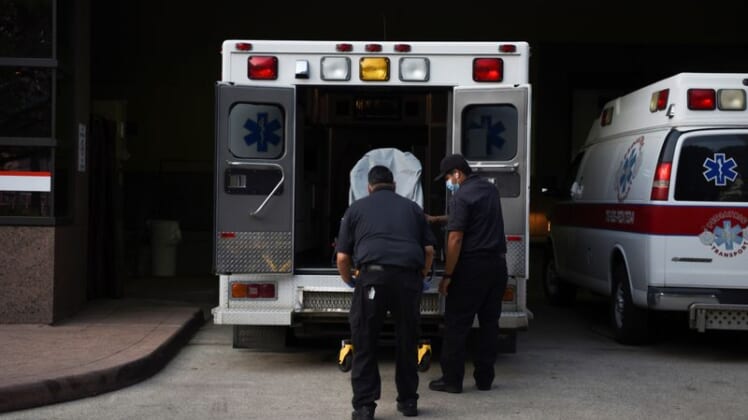
(Reuters) – Here’s what you need to know about the coronavirus right now:
Trump changes tack
Having initially played down the coronavirus and been reluctant to wear a mask, President Donald Trump has had a re-think as the United States reels from disastrous tolls of nearly 142,000 deaths and 3.91 million cases.
“It will probably, unfortunately, get worse before it gets better – something I don’t like saying about things,” he told reporters, eschewing his usual optimism and urging Americans to don face covering.
Brazil – whose leader has also chafed at the need for restrictions – India, Russia and South Africa follow the United States in the global total of infections that has exceeded 15 million..
Australian indiscipline
Australia’s death rate has been lower than many rich-world peers, but worryingly it recorded 501 new infections in the last 24 hours – the highest since the epidemic began.
Residents of Melbourne, the nation’s second most populous city and capital of Victoria state, must wear masks from Wednesday. Most of the new cases are in Victoria.
State premier Daniel Andrews chided some 2,000 people for not isolating after testing positive.
“People have felt unwell and just gone about their business,” he told reporters. “They have gone out shopping. They have gone to work. They have been at the height of their infectivity and they have just continued on as usual.”
On-off Olympics
Pity Japan’s Olympics organisers.
Already forced to cancel the 2020 Tokyo Games after years of work and billions of dollars of investment, they have an agonising wait now to see if the postponed event can go ahead next year with any semblance of normality given the coronavirus’ refusal to die. For now, they are keeping a brave face.
“It is rather difficult for us to expect that the coronavirus pandemic is contained,” organising committee boss Toshiro Muto said of the prospects for a summer 2021 Games.
“But if we can deliver the Games in Tokyo with coronavirus, Tokyo can be the role model for the next Olympic Games or other various international events.”
On Wednesday, Japan kicked off a national travel campaign called “Go To Travel”, aimed at reviving its battered tourism industry and even offering subsidies of up to 50% on some trips, despite a recent jump in new coronavirus cases.
Some local media dubbed it “Go To Trouble”.
Migrant misery
As the rich world absorbs hits to Gross Domestic Product (GDP) but is also able to pump billions of dollars in stimulus and aid, those at the other end of the scale face unmitigated disaster. Among the worst affected are low-paid migrant workers, whose existence was already fragile.
Having made huge sacrifices and travelled far to find work to sustain families back home, many find themselves in a nightmare scenario without work.
“I’m totally hopeless,” said 29-year-old Kapil, who left his wife and five-year-old son in Nepal for an airport packing job in the United Arab Emirates – but has no work this month.
Which side of the Niagara?
While the COVID-19 disease has raced chaotically around the United States, neighbouring Canada has been relatively spared and the approach has been very different – as tourists are finding at Niagara Falls on the border.
On the Canadian side, ferries heading into the mist of the waterfalls are limited to just six passengers, out of a 700 person capacity. But on the U.S. side, the ferries are operating at 50% capacity, one company said.
“You can see why the pandemic is raging in the United States and not in Canada,” said one visitor, Amanda Barnes of Brampton, Ontario. Since the outbreak began, the United States has reported around 118 coronavirus cases per 10,000 residents, while Canada has a rate of about 30.
(Compiled by Andrew Cawthorne; Editing by Barbara Lewis)
